Sigma 30 mm f/1.4 EX DC HSM
3. Build quality
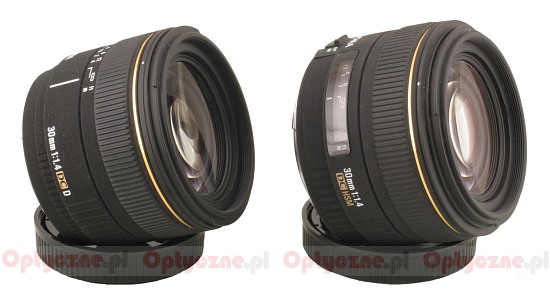 |
Even among this uniform group of lenses equipped with HSM we see some differences. For example, the switch of focusing mode (AF/MF) is found in the version for Canon, Olympus and Sigma, but not in the version for Nikon.
Please Support UsIf you enjoy our reviews and articles, and you want us to continue our work please, support our website by donating through PayPal. The funds are going to be used for paying our editorial team, renting servers, and equipping our testing studio; only that way we will be able to continue providing you interesting content for free. |
- - - - - - - - - - - - - - - - - - - - - - - - - - - - - - - - - - - - - - - - - - - - - - - -
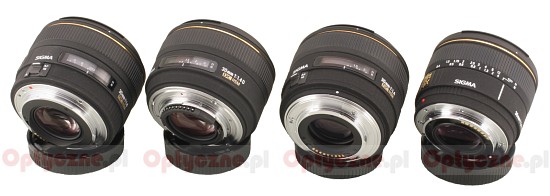 |
In terms of build quality, Sigma belongs to the highest series of this producer, marked with an EX symbol. The lens makes a solid impression, it has a metal bayonet, metal and black body and a proper ring for manual focusing, whose work gives no reasons to complain about. It distinguishes Sigma positively compared to some other analogue equivalents in which this ring can only be called a dummy. Focusing doesn’t make the lens grow in dimensions, and owing to this we’re dealing with a non-rotating filter thread of 62 mm diameter.
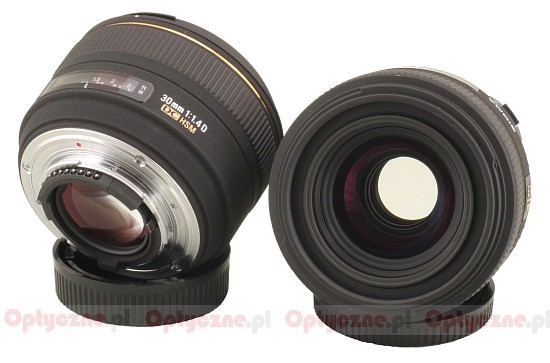 |
It’s worth to add here that Sigma, as an equivalent of an analogue 50, is not a small lens. On the other hand, its size depends on perspective from which we look. This table shows the comparison of Sigma to Nikkor 1.4/50, Pentax 1.4/50 and Sony 1.4/50. You can easily see than, although designed for a smaller sensor, Sigma is noticeably bigger and heavier than its full-frame equivalents. On the other hand, when we make a comparison to full-frame instruments equipped with an ultrasonic autofocus motor, or to Leica, Sigma is smaller. You can easily see that from another table.
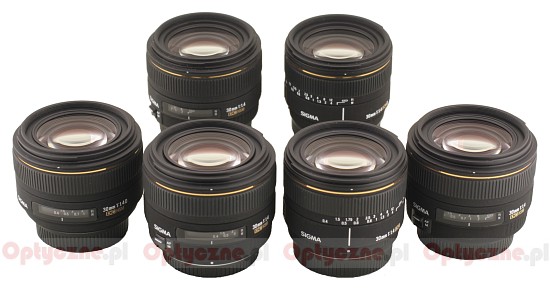 |
The internal construction comprises of 7 lenses set in 7 groups. To ensure good image quality, even at the maximum aperture, one aspherical and two low-dispersion lenses were used: SLD (Special Low Dispersion) and ELD (Extraordinary Low Dispersion). Additionally, inside we find an 8-blade diaphragm to form the minimum aperture of f/16.
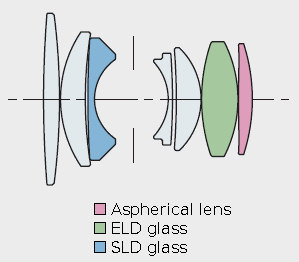
The producer ensured that the buyer, in the set, gets a lens hood and an elegant and hard casing. As with all EX lenses, as a standard, we get a three-year warranty which, for some extra charge, can be extended on another two years.
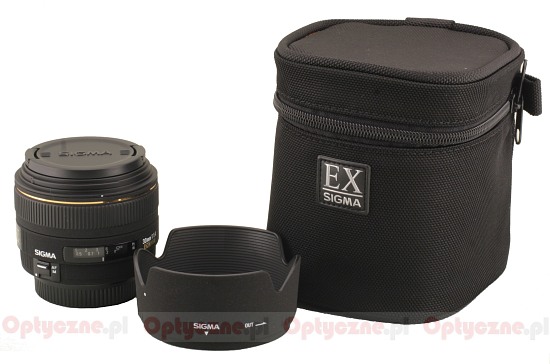 |






